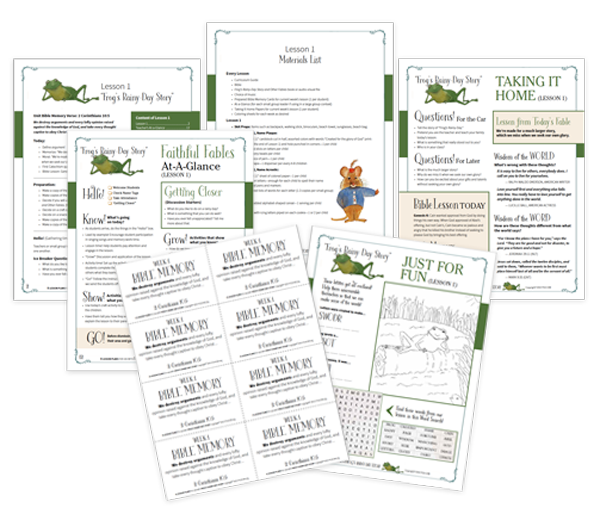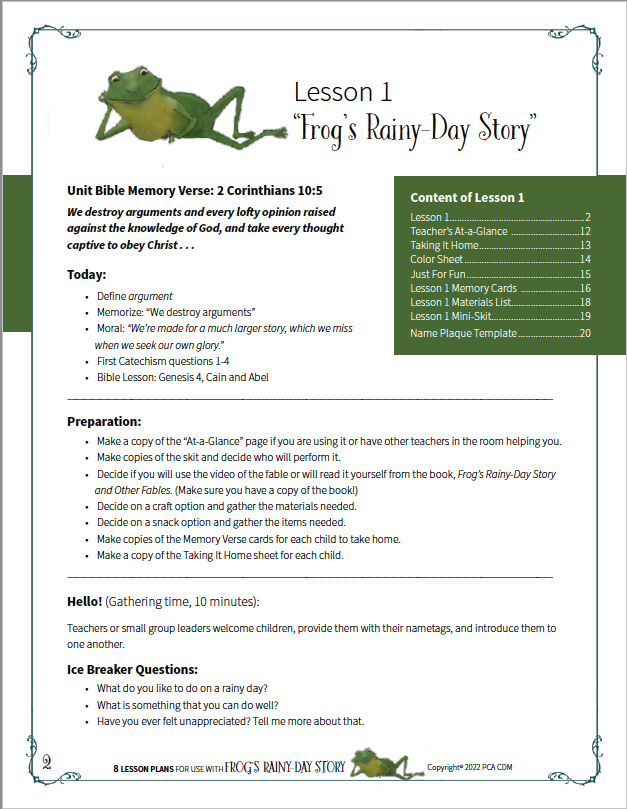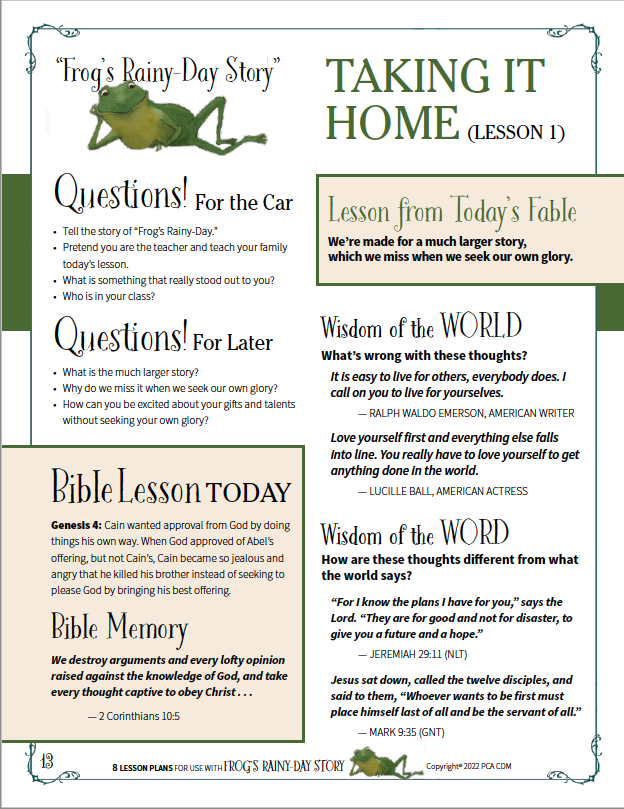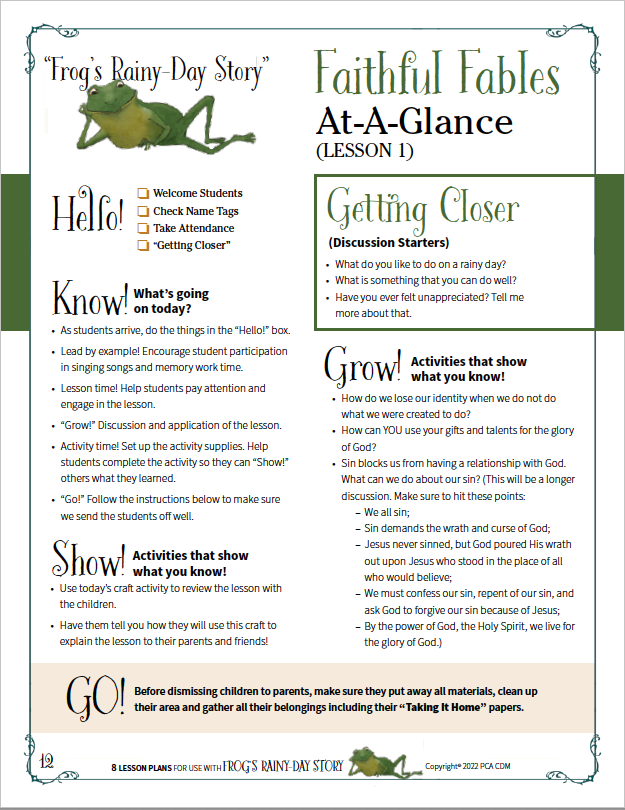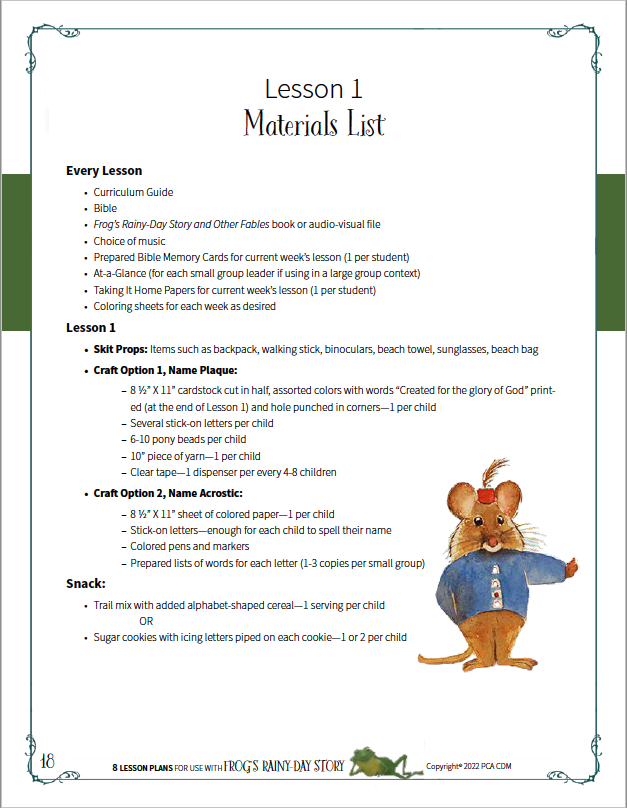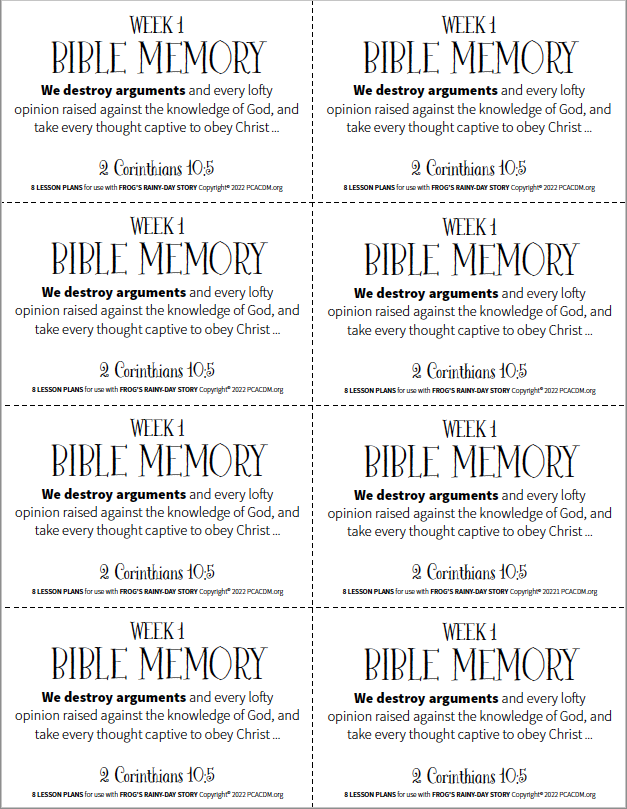Teach a Biblical Worldview
to the Next Generation
This curriculum has the most impact when the family of the child being taught in class follows up with the lessons at home. We recommend using the “Taking It Home” papers that the teacher will give to the child as a catalyst for discussion. We also recommend that each family obtain a personal copy of Frog’s Rainy-Day Story and Other Fables for use at home. The book is available in either an attractive hardcover edition at FrogsRainyDayLessons.com/buy or an especially economical Kindle version from Amazon. Reading and discussing the fables at home will reinforce the class instruction for the child and allow the entire family to learn valuable and practical biblical truths.
Frog’s Rainy-Day Story and Other Fables offers thought-provoking learning for all ages. Two “Burrowing Deeper” study guides-one for children and one for adults and teens-are downloadable for free from www.FrogsRainyDayStory.com. Studying the lessons at home promotes spiritual growth and family unity. Spiritually mature families strengthen the church.
HOW TO USE THIS CURRICULUM
We encourage you to make copies of the “Note to Parents” on page 7 and send this note home to parents two weeks prior to the start of class. This will give them time to order a copy of the book if desired. Having a copy of the book at home will allow parents to reinforce the truths taught in class, and it can promote learning and bonding for the student’s family. While this curriculum was originally used in a multi-grade, large group, hourlong setting, it was written to be adaptable to a variety of situations.
One-Hour Lessons:
Large Group:
One or two lead teachers lead music, Bible memory, catechism, and present the lesson from the front of the large room. The lead teachers or skit volunteers perform the skit. Small group leaders facilitate discussion and activities in circles seated on the floor or around tables.
Individual Classroom:
The classroom teachers lead music as desired, facilitate Bible memory, catechism, and present the lesson as well as facilitate discussion and activities. The skit may be performed by extra volunteers, by the teachers, or in the case of older students, read aloud by the students themselves.
Homeschool:
The parent may present the entire lesson or assign different children to facilitate different aspects of the lesson. For instance, one child may be in charge of asking catechism questions, another leading Bible memory. Two children may perform the skit or simply practice a “dramatic reading” of the script. Enrichment Activities for homeschooling families might include:
Researching the habitats of some of the animal characters in the book,
Researching those quoted in the “Wisdom of the World” section of the book,
Writing a new fable to teach a lesson,
Thinking of other Bible stories that could accompany the fable,
Performing one or more of the fables for family and friends.
To shorten lessons:
- Omit singing
- Omit snack
- Omit crafts
To lengthen time:
- Add additional music
- Add additional catechism questions
- Include coloring sheets as part of the activities
I am of the opinion that a good curriculum gets teachers or facilitators thinking in new and creative ways so that they can tap into their own strengths to engage the students with the content. I hope this curriculum will do that for you!

This curriculum builds upon the tremendous God-honoring lessons from the book, which makes it the perfect companion! I’ve personally helped to teach the curriculum and have witnessed kids who are incredibly engaged. Children of all elementary ages clearly retained important concepts from week to week.
— Jerry Weniger, Ruling Elder Covenant Presbyterian Church Harrisonburg, VA
The fables are fun and make it easier to understand the lesson!”
— Heidi, a Fourth-grade student
